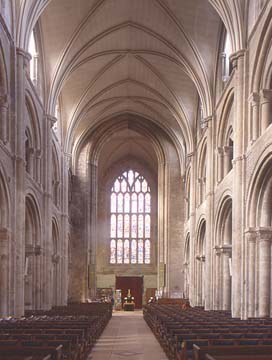| |
 |
Christchurch (Dorset) Christchurch Priory |
Christchurch Priory was in Hampshire until the county boundaries were changed in 1974. It has been a site of Christian worship since at least the 7th century, when a Saxon Minster was established there. In 1086 the Domesday Book refers to the monastery in Christchurch as the Holy Trinity at Toinham.
William Rufus gave the town and church to Ranulf Flambard, his chief minister and friend, who demolished the Saxon church to make way for the building we see today. It was begun in 1094 with Flambard becoming dean of the priory. William died in 1100 and his successor Henry I dismissed Flambard for corruption and exiled him. Henry then restored all the rights and privileges to the priory and canons, and granted the patronage of the church to Richard of Redvers, who also built the castle in the town.
Work on the church continued with the first stage completed by 1150. It was 94.8m (311 feet) long, cruciform in shape with an apse at the east end and a central tower with spire. The north transept and turret, externally decorated with intersecting and blank arcades with twin colonettes, is from this early period. Had Flambard not been forced to leave, the church might have been built totally in the Norman style.
The nave, transepts and choir were completed by 1150. In the nave the early Norman pillars and arches support the smaller double arches of the triforium and later clerestory above. The four massive clustered columns which once supported the central tower and spire, can be seen in the transept crossing. A delightful series of interlinked Romanesque arches decorate the south nave aisle and the surviving round arches in the south wall originally led to the cloisters.
Kay Ainswort
Bibliography
Pevsner, N., and Lloyd, D., 1967. The Buildings of England, Hampshire and the Isle of Wight (London, Penguin), 167-79